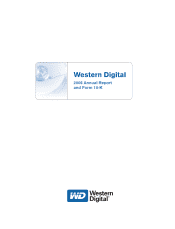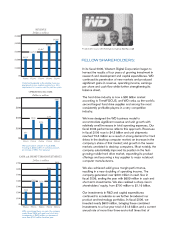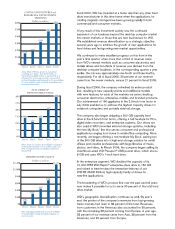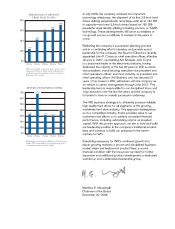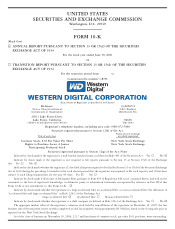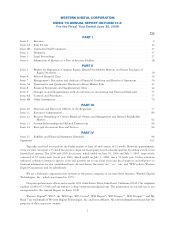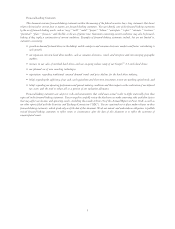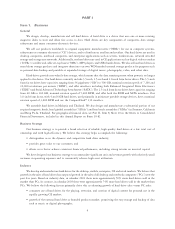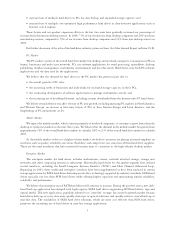Western Digital 2006 Annual Report Download - page 11
Download and view the complete annual report
Please find page 11 of the 2006 Western Digital annual report below. You can navigate through the pages in the report by either clicking on the pages listed below, or by using the keyword search tool below to find specific information within the annual report.• increased use of multiple hard drives in PCs for data backup and expanded storage capacity; and
• increased use of multiple cost-optimized high performance hard drives in data-intensive applications such as
Internet search engines.
These factors and our product expansion efforts in the last two years have gradually increased our percentage of
revenue derived from non-desktop sources. In 2006, 71% of our revenue was from desktop computers and 29% was from
non-desktop sources, compared to 79% of our revenue from desktop computers and 21% from non-desktop sources in
2005.
For further discussion of the risks of the hard drive industry, please see Item 1A of this Annual Report on Form 10-K.
PC Market
The PC market consists of the overall hard drive market for desktop and notebook computers. Consumers use PCs in
homes, businesses and multi-user networks. PCs use software applications for word processing, spreadsheet, desktop
publishing, database management, multimedia, entertainment and for other needs. Hard drives store both PC software
applications and the data used by the applications.
We believe that the demand for hard drives in the PC market has grown in part due to:
• the overall growth of PC sales;
• the increasing needs of businesses and individuals for increased storage capacity on their PCs;
• the continuing development of software applications to manage multimedia content; and
• the increasing use of broadband Internet, including content downloaded from the Internet onto PC hard drives.
We believe several other factors affect the rate of PC unit growth, including maturing PC markets in North America
and Western Europe, an increase in first-time buyers of PCs in Asia, Eastern Europe and Latin America, and the
lengthening of PC replacement cycles.
Mobile Market
We expect the mobile market, which consists primarily of notebook computers, to continue to grow faster than the
desktop or enterprise markets in the next three years. We believe that the demand in the mobile market has grown from
approximately 16% of the overall hard drive market in calendar 2003 to 21% of the overall hard drive market in calendar
2005.
As the mobile market evolves to a higher volume market, we believe customers are placing increased emphasis on
attributes such as quality, reliability, execution, flexibility, and competitive cost structures of their hard drive suppliers.
These are the same attributes that have mattered for many years to customers in the high-volume desktop market.
Enterprise Market
The enterprise market for hard drives includes workstations, servers, network attached storage, storage area
networks, and other computing systems or subsystems. Historically, hard drives for this market segment have utilized
several interfaces, including the Small Computer Systems Interface (“SCSI”) and Fibre Channel Arbitrated Loop.
Beginning in 2003, these traditional enterprise interfaces have been supplemented or have been replaced in certain
storage applications by SATA hard drives featuring an interface technology supported by industry standards. SATA hard
drives typically cost less than SCSI hard drives while offering higher capacities and maintaining similar reliability,
scalability and performance.
We believe that enterprise uses of SATA hard drives will continue to increase. During the past few years a new disk-
based back-up application has emerged with high-capacity SATA hard drives augmenting SCSI hard drives, tape and
optical media. This new application, popularly referred to as “near-line” storage, has created a growth market because
hard drives back-up or access data more quickly than tape or optical solutions, and quickly retrieve critical back-up or
near-line data. The availability of SATA hard drive solutions, which are more cost effective than SCSI hard drives,
promotes the increasing use of hard drives in near-line storage applications.
5

